
Island Talons
Condor Tribe

"The Fire Mother gifted us this jungle, and it protects and cares for us, and so we care for it in return."
Basic Information
Sept Name:
Aliases:
Territory:
Tongues:
Type:
Sept Totem:
Patron Deity:
Governance:
Chieftain:
Island Talons
Talons, Jungle Ghosts
Raincatcher Gully, Eastern La Noscea
Common, Mist Tongue
Territorial
Condor
Azeyma
Chiefdom
T'manu Nunh
Characteristics
Physical Characteristics
Island Talons look much the same as other Seekers of the Sun, with a few distinctions. Most tend to have beige or tan skin with medium to lighter hair, including shades of blonde, auburn, and red. Darker shades such as black and dark blue are rare, but not unheard of. Their eyes often reflect the vibrant colors of their territory's flora.Because they make their homes amongst the trees of Eastern La Noscea's jungles, their hands and feet are heavily calloused from climbing and hunting. In addition, they tend to have stronger tails than other Miqo'te, as they utilize them often when balancing on tree branches.
Clothing
Most of the Island Talons garb is fashioned from the creatures that inhabit the jungle and they often cover their feet with cloth or leather wraps. They favor shades of green, brown, and black, and often have beads and totems carved from their sacred wood weaved into their hair and clothing.When at home, they tend to wear light garments that allow for swift movement and allow their skin to breathe in the tropical heat. While traveling, they wear more practical clothing, and usually lightweight armor for protection.
Culture
The Island Talons have existed for thousands of years and hundreds of generations, hidden away in the mist-shrouded jungles and rainforests of Eastern La Noscea. As such, they have a rich cultural history and a number of traditions that shapes their way of life and informs their outlook on the world.
Village
Koai-o-Tahu
The village of the Island Talons is known as Koai-o-Tahu, located deep within Raincatcher Gully's dense jungle where it blends into the surrounding forest. The village itself is built beneath the shroud of the great trees, with bridges made of verdantwood and sturdy vines spread throughout the many rivers and waterways that weave through the village.The trunks of these trees are decorated with twisted roots and shoots that have been painstakingly arranged to form images of totemic animals revered by the Island Talons. The structures of the village are primarily built from verdantwood foundations, and fruit trees and earth-filled gardens are populated throughout the settlement.
Marae
The central structure of Koai-o-Tahu is known as the marae, a communal and sacred meeting place located at the heart of the village. The marae sits in a rectangular area that is bordered with verdantwood posts called au, which are handcarved by master Island Talon artisans.The focal point of the marae is a building known as the wharenui, the meeting house where tribal gatherings are held. While it is considered a sacred building, it is not a temple, and no food is permitted to be taken inside the wharenui. However, certain ceremonies are often performed outside the building on the marae.
Structures
The majority of Island Talons do not have their own homes, and instead sleep in rectangular sleeping houses known as wharepuni, which are made from verdantwood, rushes, tree ferns and bark, with thatched roofs and earthen floors. Siblings born of the same mother or nunh often share a wharepuni, and the Warrior-Chieftain and High Priestess each have their own private wharepuni.Pātaka are the storehouses of the Island Talons, which can be used to store anything from worked verdantwood, crafting tools and supplies, weapons and armor, or other necessary goods. Island Talon artisans often work near a pātaka that stores the materials necessary for their craft.Island Talons prepare their food in cooking houses known as kāuta. Tribal chefs prepare the traditional earth ovens within these buildings, while roasting pits are situated along the outside. Certain kāuta are designated as places to butcher the jungle animals hunted for food, and others where the food is properly cooked.
Rites and Rituals
Verdantwood
The most scared ritual amongst the Island Keepers is the growing and cultivation of an enchanted wood they call "Verdantwood", named for its unique coloring and properties. Said to have been gifted to their ancestors thousands of years ago by Azeyma's daughter Nophica, the seeds are harvested from a green flower that grows only in a large cave deep within Island Talon territory, known as the Verdant Cave.Those who harvest the seeds are known as "Seed Wardens", and each Island Talon child is taught to work with the wood harvested from the great trees that grow when they are planted. The wood is as strong as metal, and is often used in their weaponry, and has other magical properties depending on its use.
Oral Tradition
Island Talons have an expansive oral tradition, and their gatherings are often begun with a legend or tale spoken aloud by the chieftain. They have a tradition of genealogical recital, often connecting themselves and their bloodlines to great heroes of the past. Island Talons have a love of poetry and song, and many of them are taught to sing from a small age. Certain activities, such as firemaking, fishing, and hunting involve ritual chants, and they have great epics told in spoken word.
Tatau
Island Talons have an ancient tradition of sacred tattooing, known as "ma-huko" in Mist Tongue or "tatau" in transliteration, with the ink being derived from verdantwood seeds. Tatau artists are considered sacred in their culture. The tataus are said to mark an individual's purpose in life, and help to keep their aether in balance.Chieftains and priests receive the most tataus, as they are chosen for great purpose, and are the only Island Talons permitted to have ma-huko cover their entire body. The tataus are often geometric in style, and evoke imagery of the jungles, including the flora and fauna. Depictions of condors, as their tribal totem, are also common.
Aumakua
In addition to reverence for their tribal Condor totem, individual Island Talons will often revere additional totems that are personal and resonate with them, known to them as aumakua. These are often drawn from spirits of birds and beasts found in their animistic worship, but those of plants, trees, and fish are not uncommon. These aumakua are often evoked through their ma-huko tataus, alongside other traditional imagery.
Seasonal Feasts
At the passing of each season, ceremonial feasts are held, which are multiday affairs that include sacred hunts, war dances, and religious rituals. Each feast is overseen by the High Priestess, who opens and closes the ceremonies.
Religion
Azeyma, The Fire Mother
The chief deity of the Island Talons religion is Azeyma, whom they perceive as the passionate guardian of their jungle and its creatures, often depicting her as a beautiful Miqo'te warrior covered in ma-huko, wielding a spear made of verdantwood. It is said that she gifted their ancestors fire and the instincts to hunt, and with them, to survive in the harsh times of an ancient world. It is from this tale that she is known to the Island Talons by the moniker of "Fire Mother".The Fire Mother's priests tend to the various shrines that are scattered around their territory, kindling the flames that are said to have been burning since their people first came to settle in the jungle. The High Priestess of the Island Talons is always a priestess of Azeyma and her sworn have ma-huko tataus that depict sun imagery.
Nophica, The Earth Tender and Lymlaen, The Wind Watcher
Worshiped alongside Azeyma are her daughters, Nophica and Lymlaen, known to the Island Talons as the "Earth Tender" and the "Wind Watcher", respectively. Island Talon legends say that Azeyma implored her daughters to bear their gifts to her people, so that they may flourish and prosper, and so gifts of earth and sky were imparted to the Island Talons.It was the Earth Tender who gifted them the green flowers that produce verdantwood seeds, and it is to her that prayers of good harvest and fertility are sent. She is further revered as a goddess of motherhood and seasons.It is from the Wind Watcher that the rain, the bounty of the sky, is brought to the jungle, filling the Island Talon water collectors and allowing the land to drink. She is also revered as the goddess of the sea and violent storms.
Spirits
Below the triple goddesses, the Island Talons also practice a form of animism, holding that the flora and fauna around them are possessed of spiritual power. Chief among these spirits are the spirits of the elements, which are said to possess the foremost amount of power, though they still pale in comparison to that of the goddesses. Of the spirits of the wild, the condor spirit is thought to be the strongest.Island Talon priests often commune with these spirits for guidance, as the whims of their patron deities are not always clear, and the spirits are more likely to provide answers, even if they may take time to decipher. Island Talon warriors often look to the spirits of the elements or jungle predators for strength in battle.
Cuisine
Culinary Traditions
Cooking is an important aspect of Island Talon culture, and those who are tasked with preparing food for the sept hold an important position. Island Talons primarily cook their food in earth ovens, where stones are heated by fire and food is packed in leaves atop the stone. The leaf-packed food is then further covered with foliage and wet cloth, then earth.Roasting is the second-most common way to prepare cooked food, and food is preserved through smoke, fermentation, and fat layers.
Ingredients
The primary proteins used in Island Talon cooking are fish and meats from the native fauna of the jungle, including raptors, giant pelicans, and gigantoads. Coeurl meat is also used, but only in the cooking of sacred meals. Meats tend to be prepared using a healthy amount of spices and served or marinated with a rich sauce.Vegetables and fruits commonly used include the dragon pepper, prickly pineapple, mango, sweet popoto, taro, mugwort leaf, coconut, and melons. Insects are common in their meals, primarily the grubs of the beetles native to the jungle. Sugar is also common, as it flourishes in the tropical climate of the jungle.
Tribal Structure
Tribal Leaders
The leader of the Island Talons holds the title of Warrior-Chieftain, always a male holding the title of Nunh. In addition to chieftain, he is the foremost warrior of the sept, and leads hunting parties when their territory is threatened. He is called on to settle intersept disputes, and decide on political interactions with outsiders and those of other Miqo'te septs.The chief advisor to the Warrior-Chieftain is the High Priestess of the Fire Mother, almost always the most skilled huntress in the sept. She is always at the Warrior-Chieftain's side during official meetings, and travels with him when acting as an emissary to other septs. While not dictated as part of tradition, it is often the case that the Warrior-Chieftain and High Priestess become primary romantic partners.
Priests of the Goddesses
Azeyma, Nophica, and Lymlaen all count priests among the Island Talons. Though individual priests or priestesses may be sworn to a different goddess, they are nonetheless dedicated to the spiritual cultivation of all Island Talons, and often congregate together when matters of religion need to be addressed.Shrines to each goddess can be found scattered throughout Island Talon territory, although those dedicated to Azeyma are the most numerous. The priesthood is led by the High Priestess of the Flame Mother, and a great many priests are hunters, as well.
Seed Wardens
Those who guard and tend to the sacred cave from which verdantwood seeds are harvested are known as "Seed Wardens" and they are considered a sacred position, alongside the priests and priestesses. They are taught ritual cultivation practices and secret magics that allow for careful harvesting of the seeds.Because of their focus on nature magic and herbalism, many Seed Wardens are also gifted healers and wounded Island Talon warriors are often brought to the Verdant Cave for healing.
Nunh and Tia
Island Talons have three nunhs at any given time, as their sept is rather numerous, as far as Miqo'te are concerned. One of these nunh are then appointed to be chieftain, almost always the one with the strongest bloodline.Tia can challenge a nunh to assume his position, but challenging the chieftain is strictly forbidden. When a nunh or the chieftain dies, their strongest son is chosen to replace them, which has resulted in a long line of chieftains that share the same blood.
Warfare
Weaponry
Island Talons are fierce and swift warriors, skilled at fighting amongst the dense jungles and frequent rain. Their preferred weapons include spears, short bows, and a type of war club lined with shark teeth, often paired with a shield.Utilizing ancient techniques, their spearheads and arrowheads are crafted from verdantwood hardened with fire, affixed to hafts made from the same sacred wood, and their bows are strong enough to wield as melee weapons against even the strongest sword.
Totemists
While a great many Island Talons are considered warriors, only a privileged few are worthy enough to be called "totemist", the name given to sacred warriors who channel the magic of totem spirits in battle, and harness all the power of their fury and cunning.Versed in fighting and hunting techniques handed down through the generations, totemist combine their weapon attacks with elemental evocations, channeling the might of nature through their combat. Both hunter and mystic, totemists understand the jungles of the Island Talons territory like few others, and they are tireless hunters of those who dare defile their home.
Relations
Island Talons have traditionally had a cordial relationship with other inhabitants of Vylbrand. They occasionally engage in trade with Limsa Lominsa, as many seek out verdantwood for stories of its unique properties.Although the Island Talons will never teach outsiders how to properly shape the wood, those who earn their trust will be permitted to have an Island Talon fashion them an item out of their sacred wood. Some sailors have managed to secure verdantwood reinforcements for their ships, but this is particularly rare.When they do trade, Island Talons trade for ores, meats, and vegetables, especially those not found in their jungles.
Tribesfolk
T'manu Nunh
Warrior-Chieftain
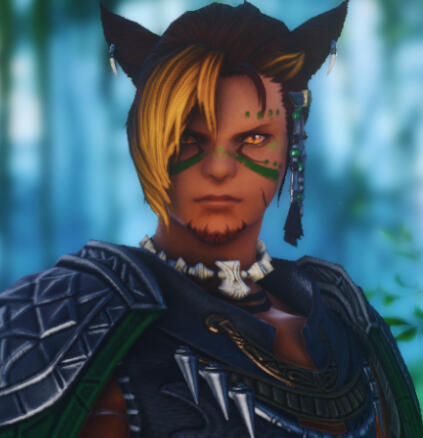
Forthright, commanding, and stern, there are few who stand as proudly as the Warrior-Chieftain. His words are always carefully considered, for they carry not only his voice, but the voice of all Island Talons. As a warrior, he is brave and as a chieftain, he is discerning.
T'iolani Hiapo
High Priestess
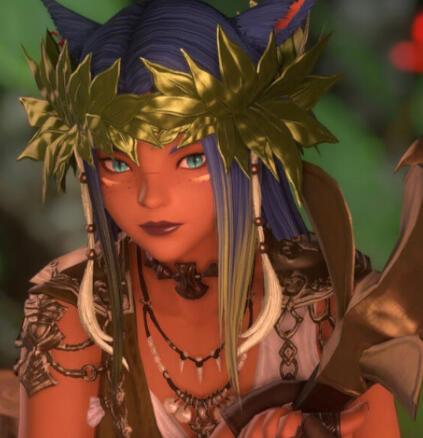
As High Priestess of the Island Talons, T'iolani has the second most important position within the sept, charged with guiding religious ceremonies and interpreting messages left by Azeyma. She is also a skilled huntress and leader of the guardians that protect the verdantwood cave.
T'hiapo Nunh
Tribal Council
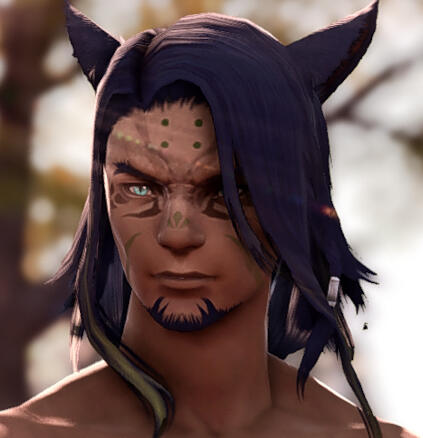
The oldest and longest holder of the Nunh position among the Island Talons, T'hiapo is a skilled warrior and hunter. He is the father of the High Priestess, and takes great pride in his daughter's position. Having advised two prior Warrior-Chieftains, T'manu relies on him for his wisdom and experience, and T'hiapo trusts in his leadership.
T'hokoa Nunh
Tribal Council
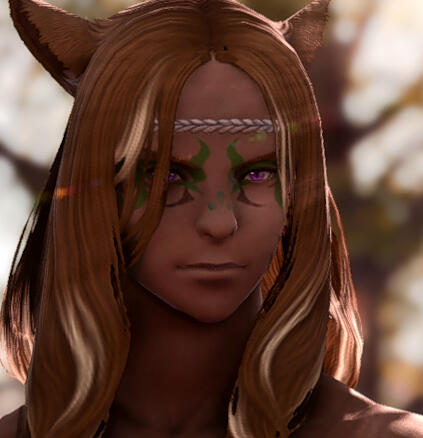
Though middle-aged, T'hokoa is the younger of the two Nunh that serve beneath the Warrior-Chieftain. He is a botanist that relies more on wit than body, and he has passed his knowledge of botany and cultivation to many of his children. T'manu has come to appreciate his more diplomatic approach to tribal affairs.
T'kiri Hokoa
Artisan
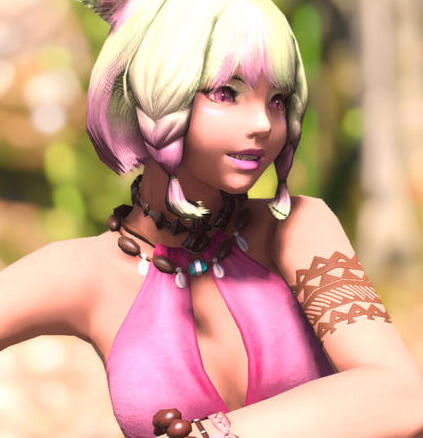
Youngest daughter of T'hokoa, T'kiri is a skilled botanist and the most gifted weaver among the Island Talons. Much like her father, she prefers remaining in the village and working her craft, rather than out scouting the jungle. Her sunny disposition and youthful energy always bring levity to any gathering, and many an Island Talon is clothed in her work.
T'mhari Rinz
Healer
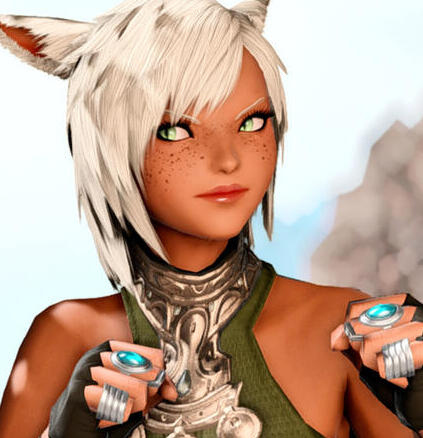
T'mhari is one of the most skilled Island Talon healers, though her spitfire personality might lead others to believe she prefers to fight. It isn't helped by the fact that her preferred method of interaction is a friendly punch or a bout of sparring. Still, she is highly valued for her healing abilities, especially in the thrill of combat.
T'rhutea Tia
Emissary
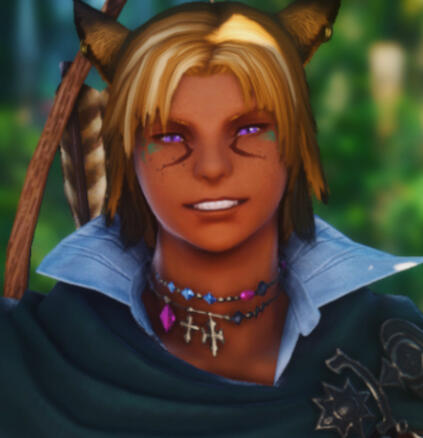
T'rhutea is the foremost emissary of the Island Talons. A gifted orator and bard, he is often found among the city-states of Eorzea, trading verdantwood and other goods from their native jungle with the various merchants of Eorzea. He is also a highly skilled archer, and was trained from birth as a forester and woodworker.
T'rangi Tia
Hunter
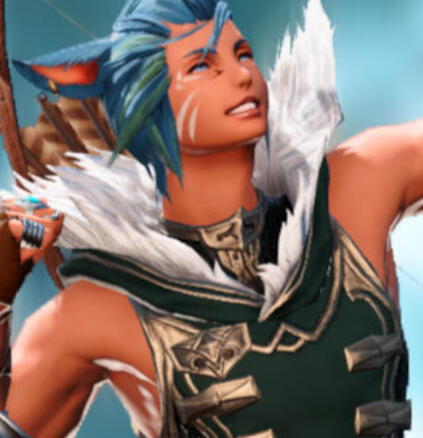
Younger brother of the High Priestess, T'rangi is counted among the hunters that both provide sustenance for the sept and guard their territory against outsiders. He is a skilled elementalist, channeling the spirits of the land into powerful magics. He has less responsibility than his sister, but is still looked upon to uphold Talon traditions.










